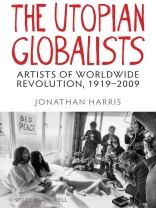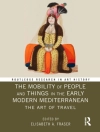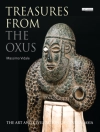THE UTOPIAN GLOBALISTS
'Crossing continents, historical periods and cultural genres, Jonathan Harris skilfully traces the evolution of utopian ideals from early modernism to the spectacularised and biennialised (or banalised as some would say) contemporary art world of today.’
Michael Asbury, University of the Arts, London
The Utopian Globalists is the second in a trilogy of books by Jonathan Harris examining the contours, forces, materials and meanings of the global art world, along with its contexts of emergence since the early twentieth century. The first of the three studies, Globalization and Contemporary Art (Wiley-Blackwell, 2011), anatomized the global art system through an extensive anthology of over 30 essays contextualized through multiple thematic introductions. The final book in the series, Contemporary Art in a Globalized World (forthcoming, Wiley-Blackwell), combines the historical and contemporary perspectives of the first and second books in an account focused on the 'mediatizations’ shaping and representing contemporary art and its circuits of global production, dissemination and consumption.
This innovative and revealing history examines artists whose work embodies notions of revolution and human social transformation. The clearly structured historical narrative takes the reader on a cultural odyssey that begins with Vladimir Tatlin’s constructivist model for a 'Monument to the Third International’ (1919), a statement of utopian globalist intent, via Picasso’s 1940s commitment to Soviet communism and John and Yoko’s Montreal 'Bedin’, to what the author calls the 'late globalism’ of the Unilever Series at London’s Tate Modern.
The book maps the ways artists and their work engaged with, and offered commentary on, modern spectacle in both capitalist and socialist modernism, throughout the eras of the Russian Revolution, the Cold War and the increasingly globalized world of the past 20 years. In doing so, Harris explores the idea that the utopian -globalist lineage in art remains torn between its yearning for freedom and a deepening identification with spectacle as a media commodity to be traded and consumed.
Spis treści
List of Illustrations ix
Acknowledgements xi
Introduction: The World in a Work of Art 1
Global Order, Social Order, Visual Order 2
'Globalization’ and 'Globalism’ in Th
eory and Practice 10
Capitalism and Communism as (Failed) Utopian Totalities 16
Ideal and Real Collectivities 23
1 Spectacle, Social Transformation and Utopian Globalist Art
34
Spectacular Cold War Communisms and Capitalisms 35
Alienation/Separation and State Power 44
System, Totality, Representation and the 'Utopian
Imaginary’ 51
The 'Conquest of Space’, Spectacular Art and
Globalist Vision 57
2 The Line of Liberation: Tatlin’s Tower and the
Communist Construction of Global Revolution 76
Revolutionary Rupture, Structure and Sense 77
Space and Symbolism 85
Beyond Order 95
Collectivity and Necessity 103
3 Picasso for the Proletariat: 'The Most Famous
Communist in the World '118
Commitment to the Cause, Right or Wrong 119
Picasso as Screen 129
Image, Persona, Mediations 139
Picasso ’ s Use and Exchange Value 147
4 Some Kind of Druid Dude: Joseph Beuys’s Liturgies of
Freedom 165
Tatlin for the Television Generation 166
The Beuysian Spectacular Persona 171
The Spirit of the Earth 179
Process, Performance, Metabolic Transformation 185
Political Actions 191
5 'Bed-in’ as Gesamtkunstwerk: A Typical Morning
in the Quest for World Peace 211
Sugar, Sugar 212
A Sequestered Zone of Peace 217
Just My Imagination 225
A Man from Liverpool and a Woman from Tokyo 229
6 Mother Nature on the Run: Austerity Globalist Depletions in
the 1970s 246
Transmission, Replacement, Negation, Deletion 247
West/East-North/South 253
Banality as Tactic 260
Austerity Globalism’s Body-Politic 265
'Development’ Exposed 272
7 Nomadic Globalism: Scenographica in Christo and
Jeanne-Claude’s Wrapped Reichstag 287
The Negation Negated 288
Art, Business, Diplomacy 292
The Materials of Spectacle 296
Form as Sedimented Content 299
Seductive Acts of Occlusion 306
Conclusion: From the Spiral to the Turbine: A Global Warning
316
Large Rooms Full of Wonderful Curiosities 317
The Void of Possibilities 320
Disappeared 323
Index 333
O autorze
Jonathan Harris is Professor in Global Art and Design Studies at Winchester School of Art, University of Southampton, UK. His work has consistently explored questions of state power, culture, art, ideology and social order, particularly in Europe and America over the past century. His The New Art History: A Critical Introduction (2001) remains a classic text, and he has published 17 books as editor, author and co-author, including Globalization and Contemporary Art (Wiley-Blackwell, 2011).












